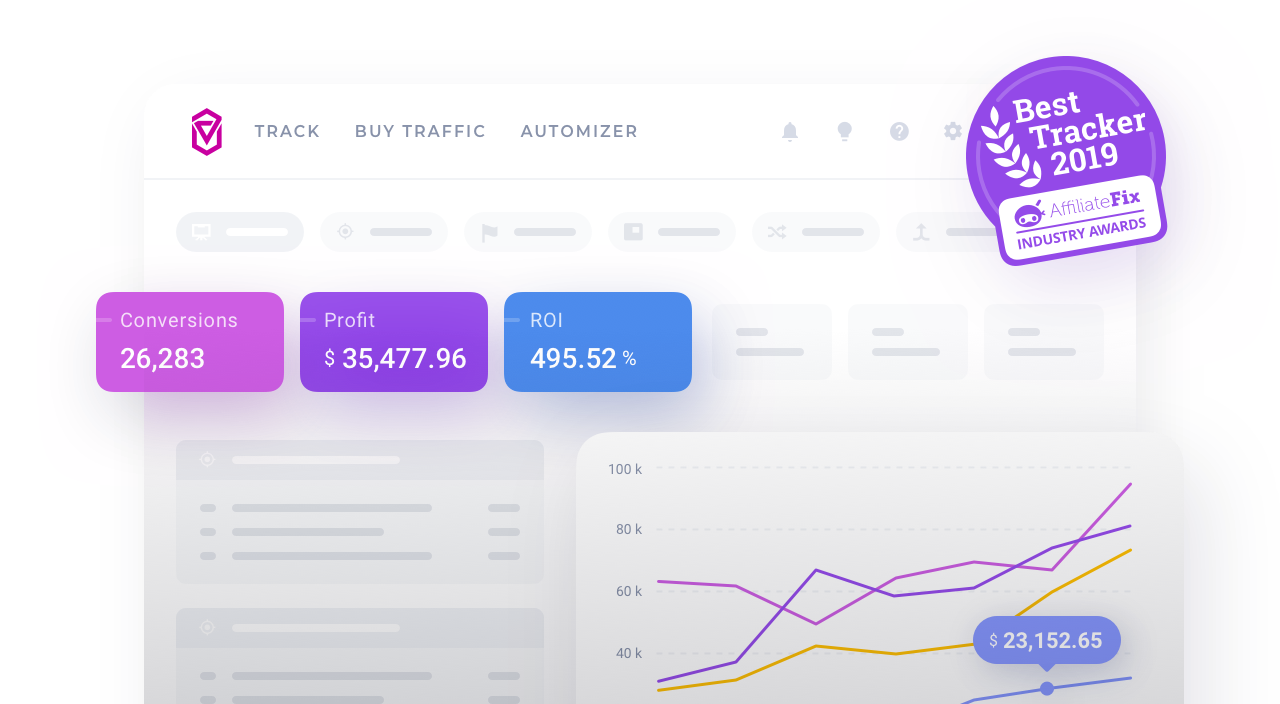Voluum as a bot filter
Bots are a big and still growing problem in the digital marketing industry. They are one of the main tools of ad fraud. They can artificially inflate numbers of visits and clicks of various websites, distorting the picture and skewing the statistics.
Not all bots are of malicious intent. Some of them are simply web crawlers, sent by the web search engines to index the content of all web pages. Voluum filters these so-called 'known-bots' out from your stats automatically on all pricing plans to keep them clean. However, most bots have other intentions.
Voluum faces the threat of malicious bots every day. To cope with its, Voluum offers the Anti-Fraud Kit, a feature that is aimed at identifying these bots. The identification process relies on various metrics that look for a bot-like type of behavior. All traffic that is directed through Voluum is scanned against these metrics. If a single event matches the criteria of at least one of these metrics, it is marked as "suspicious".
If you run digital marketing campaigns, you can use Voluum to learn:
- Which traffic sources are trustworthy, so you can focus on them.
- What segments of traffic (countries, device types, and other) are more fraudulent, so you can cut them off.
- Which placements supply you with bad traffic, so you can stop paying for them.
This can be applied to all digital marketing campaigns.
Pricing plan availability: Note that this feature may not be availablr on all pricing plans.
How Does It Work?
The bot-generated traffic can usually be characterized by a distinct type of behavior. The Anti-Fraud Kit consists of three parts that can help you recognize them.
Anti-Fraud Metrics:
Bots are usually simple in their design. In order to achieve the simplest, but still significant result, and that is to increase the number of visits and clicks, they do not have to be sophisticated. They do not try to mimic human behavior. This bot-like type of behavior can be identified using the Anti-Fraud metrics.
In short, these bots tend to click faster than a human would, come from unsupported or unrecognized operating systems or originate from known data centers. Voluum checks the incoming traffic against each of the 9 metrics available to identify these patterns that usually accompany bot traffic. The complete list of metrics that traffic is checked against can be found in the Anti-Fraud Metrics: Listing article.
Traffic Log:
The Traffic Log provides you with detailed information about every individual visit. With this feature, you can download a CSV file the exact time and date of each visit, IP that was behind a visit and many others. The traffic log you generate also includes the Anti-Fraud metrics. This is the most granular method of analyzing traffic for ad-fraud detection.
Time-To-Convert Metrics:
The time-to-convert metrics show you how much time has passed between the click on the ad and a conversion. Many bots tend to generate a fake conversion faster than any human would. This is especially useful if you run app-install campaigns. These metrics show you four values: mean time-to-convert in seconds and the number of conversions that were below, within, and above set thresholds. You can configure these thresholds to match your case more specifically.
Honeypot:
If you are using landing pages in your campaign funnel, then this feature is for you. Unsophisticated bots tend to click the first link they find. The Honeypot feature provides a special link that is only visible to bots, but not to a human user. When you put this link at the top of your landing page, each activation will have to be of bot origin.
Using the Anti-Fraud Kit Feature
Voluum applies the Anti-Fraud Kit feature to all traffic that is directed through it. To direct traffic through Voluum, you need to create a standard Voluum campaign, as described in the Create a Simple Campaign article.
Once you do so, you will be able to identify the sources of good and bad traffic. It is best to check the quality of traffic with targeting options that are available in your traffic source in mind. For example, if your traffic source allows you to target specific browsers, you can do the following.
- In Voluum, create a specific report for a given campaign by double-clicking it.
- Select the Browsers grouping category.
-
Verify which browsers generate the most suspicious traffic.

In the image above that contains sample data you can clearly see that Opera and Facebook App browsers are the biggest sources of suspicious traffic. Go to your traffic source and stop targeting these browsers.


